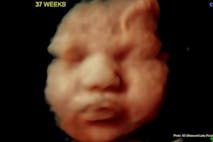
Hearse arrives at Illinois Planned Parenthood to 'pick someone up'
Nancy Flanders
·
Politics
Nancy Flanders
·
Politics
Cassy Cooke
·
Politics
Cassy Cooke
·
Guest Column
Right to Life UK
·
400k+ Readers Strong & Growing
News & Commentary from
A Pro-Life Perspective
As the news arm of Live Action, we educate the public and advocate for preborn rights by providing timely, accurate, and compelling news and stories about the pro-life movement.

Politics
Nancy Flanders
·
Politics
Cassy Cooke
·
Activism
Nancy Flanders
·
Politics
Cassy Cooke
·
Guest Column
Right to Life UK
·
International
Angeline Tan
·
Guest Column
Mark Lee Dickson
·
Pop Culture
Cassy Cooke
·
Activism
Angeline Tan
·
Investigative
Carole Novielli
·
Human Rights
Bridget Sielicki
·
International
Cassy Cooke
·